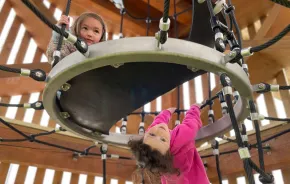How to Get Started With Backyard Chickens

Care and feeding of chicks
Brooder basics
When raising baby chicks, you’ll need a cage or pen to keep them warm, dry, away from drafts and safely out of reach of the family cat or dog. Plan for a minimum size of one square foot per chick for their first six weeks of life. A wooden box or plastic bin will do just fine.
Location and light
The location needs to be warm, bright and away from drafts. Inside the house near a window is a good choice; if you opt for the basement or garage, make sure you provide at least 10 hours of light (up to 18 hours is recommended for the first week of life). Chicks generate a surprising amount of dust, so place them in an area that’s easy to keep clean.
Heat
For warmth, a heat lamp works fine — you can buy just the bulb at a hardware store. Suspend it about two feet above the floor of the cage. Keep a thermometer in the cage at chick level and check it often. Have the cage preheated and the lamp and temperature adjusted and fine-tuned before your chicks come home — try it out ahead of time. The temperature should be 90°F for the first week, then reduced by 5 degrees per week by moving the lamp higher. It’s best to have the lamp situated such that the chicks can move closer to get warmer or further away if it’s too hot.
Bedding
Cover the floor of the cage or pen with a litter that you can keep clean and dry. Several inches of wood shavings or straw are good options. Old towels work well while they’re very young (change them out every day). Newspapers can be layered underneath the litter, but don’t use newspaper alone; there have been reports that paper is too slippery for chicks and can cause knee and leg injuries. Best not to risk it.
Food and water
The first thing to do when you introduce the chicks to their new home is to teach each chick to eat and drink by dipping its beak in the water and in the feed. You’ll need a small feeder and waterer for chicks; later, when they’re older and gallivanting around your backyard you’ll want a larger feeder and waterer.
Chickens have different nutritional needs at different phases of their life. Give chicks “starter” feed that you can buy at the farm-supply store. Keep their feeder and waterer full and clean. It’s a good idea to secure the feeder and waterer to the side of the cage, or suspend them at the height of the birds’ backs to keep chicks from tipping them over, spilling the contents, getting wet or perching on the equipment and depositing droppings in the food and water.
What's up, chicken butt?
You may need to wipe your little chicks' butts with a wet washcloth occasionally if droppings stick to their behinds; vents on chicks can become blocked with dried droppings, causing the chicks to die.











